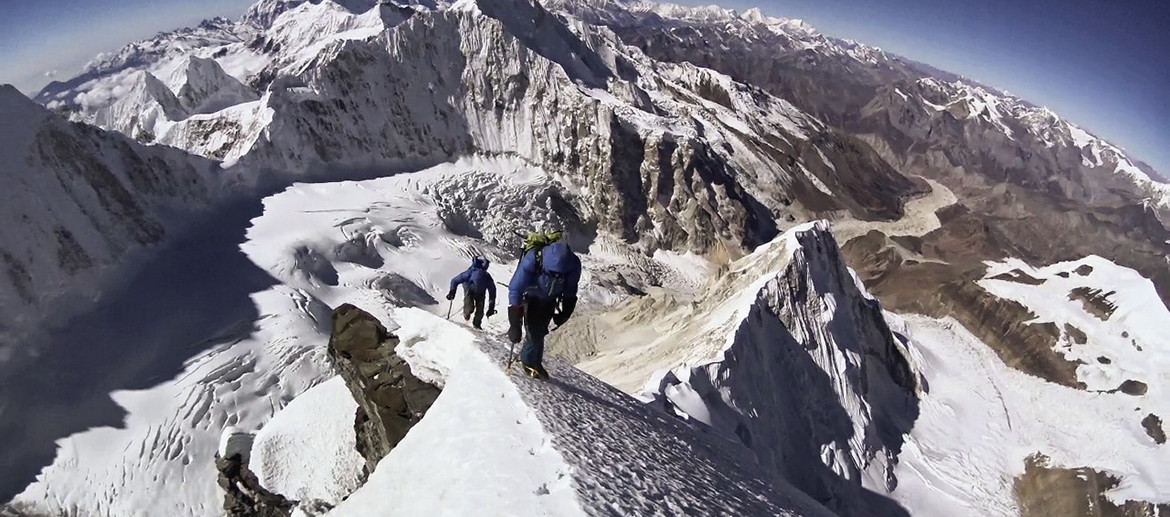Himjung 7092 West Ridge
“Let’s go! Get up!” It’s 10:00pm on October 31st, 2018. Things are slowly beginning to move inside the two-man tent that rests on the foot of the west ridge of Himjung. The tent is 6,180 metres above sea level and packed with three climbers, ready to take on the day. Sebastian Fuchs is the first climber out of the tent and as the first person awake, he begins to boil water. Stefan Larcher and Vitus Auer continue to sleep for awhile longer, before realizing that they can’t keep sleeping if they want to achieve their ambitious goal they have set out to accomplish.
The team of three mountain guides have ambitious plans, they want to be the second rope team to ever climb to the summit of Himjung on the still untouched west ridge. It’s no wonder that this route has never been contemplated before. This unique route has an almost continuous overgrown firn ridge, that leads over the long, rocky west ridge, then continues on to the steep summit structure. The team doesn't expect great technical difficulties, but they know never to assume anything on a first ascent.
On both of the three-day acclimating tours, the team was able to check out all possible route variations with their binoculars. Originally, they wanted to reach the summit via the untouched, yet longer Southeast ridge, but this route was thwarted by the Nepalese government. After multiple attempts of trying to obtain a permit in Kathmandu, the three climbers ultimately decided with a heavy heart to set up their base camp on the West side of the mountain. “Accept and rethink” was the new motto of the trip. In general, many things went quite differently than they had planned for this expedition.
With this new situation and route at hand, many benefits began presenting themselves. The base camp was now "only" 5 kilometers away from the foot of the mountain, with virtually no ascent on the way back to said BC. With this new route, there’s also a greater range of ascent routes, as well as different possibilities for acclimatization tours, as there are four 23,000 ft peaks in this valley.
The final preparations for the trek are underway, and the team has coordinated well. At 11:00 a.m. sharp, the cli,bers leave Camp 1. Sebastian and Stefan set off with an extremely motivated pace, until they slowly find the right tempo a few minutes later. A steep upturn leads to the firn ridge, which flows into a 55° steep firn flank. Each of them climbs on their own, as it’s pitch black at the beginning and only during the second half of the night, the moon begins to light the way. The conditions are perfect and the difficulties are not too challenging, yet full concentration is required. Everyone knows how steep the mountain drop is in all directions. Slowly, the mountaineers’ beams of light move higher and higher, before they reach the highest point of the west ridge at 6,609 meters. After a short break, they continue further on the sometimes flat but often 55° steep firn cornices of the ridge. Their fear that the 50-m-long rock passage on the ridge might be very brittle is confirmed. But it can still be climbed without a safety rope and thus at quite a swift pace.
The lack of sleep and the high altitude begin to take their toll on the climbers and the fatigue sets in. After around 6 hours, the team has reached the deepest incision on the ridge and decides to take a longer break. However, the wind and cold temperatures make it very uncomfortable. Sebastian and Vitus crawl into the two-man bivouac sack and Stefan digs his pickaxe into a small snow alcove. The next 30 minutes of rest are awful, cold and windy. All of them doze off slightly until they decide to continue on further as the rest they're getting here isn't a comfortable one. The mountain now steeply towers high in front of the three climbers and the wind really starts to set in.
“Precipitation looks good, temperatures are within the normal range, but it’s the wind that worries me”, says Karl Gabl to the team in a telephone conversation on October 30th, 2018, one day prior to setting out on their adventure. Sebastian, Stefan and Vitus initially wanted to cross the mountain in 4-5 days, with tents, sleeping bags and the necessary food, but according to the weather there wasn’t going to be enough time for that - only one and a half "good days" of weather were in the forecast.
They were already acclimated, had put themselves through a lot of effort and now, according to the forecast for the ongoing period, the jet stream would be blowing at 90km/h for up to 7,000 meters. “Is that it now? Do we have to just drive home empty-handed? We have to give it a try!” The tactics were reviewed, the luggage was lightened, they decided to be back at the base camp in just three days instead of four to five.
The team found themselves just 200 meters below the summit. After a very steep upturn, which they had secured with a 60-meter climbing rope, the ridge was slightly flatter and everyone once again climbed on their own. The wind was now blowing at 50 km/h with strong gusts, making the ascent noticeably more difficult. Everyone is aware of the weather forecast and the predicted jet stream, so thee main focus now is on climbing as fast as possible. The situation was getting serious,a possible withdrawal would be difficult and complicated, but the team was hopefuly they could reach the summit before the wind gets too strong.
"The wind was rising and the cold was creeping in through the thick clothes, it was time to move on. I continued on. The steepness of the ridge increased to 55°. Yet another gap traversed over in the style of a vole. The ridge seemed endless. I’ve never puffed and panted like that. This kind of tiredness, this fatigue, I had never experienced it before."
At 9:00 a.m. on November 1st, 2018 the three climbers stand at the summit of Himjung in a sudden calm, congratulating each other and admiring the view. Their long-awaited dream had just come true.
After a long rest just below the summit, the descent over the unclimbed north ridge began. Full concentration is needed once more for the long crossing below the distinctive craggy rocks. As is often the case, Sebastian climbs ahead. All three are suddenly very tired, the altitude took a tight hold over them. A climb on the ridge uses up the last of their energy reserves before they finally reach the glacier ridges, over which they can quickly descend several hundred vertical meters and finally recover from the physicall toll they just put their bodies through.
The glacier ridge ends on a high, brittle rocky cliff - one the team had not anticipated. After a lengthy search with a lot of risks and under giant ice towers, they find a way out of the dead end, and by sunset the team reaches the Himjung glacier. The last counter-climb takes everything out of Sebastian, Stefan and Vitus before they reach the campsite around 8:00 p.m.
The next day, heavy wind and snow adorns the surrounding 7,000-meter mountain. Despite the weather, at around 4:00 p.m. the three men arrive at the base camp, tired but happy. The expedition was the first big experience of high altitudes and mountains for Stefan, Sebastian and Vitus in the Himalayas.
“We began this adventure as partners, but came back as friends.”
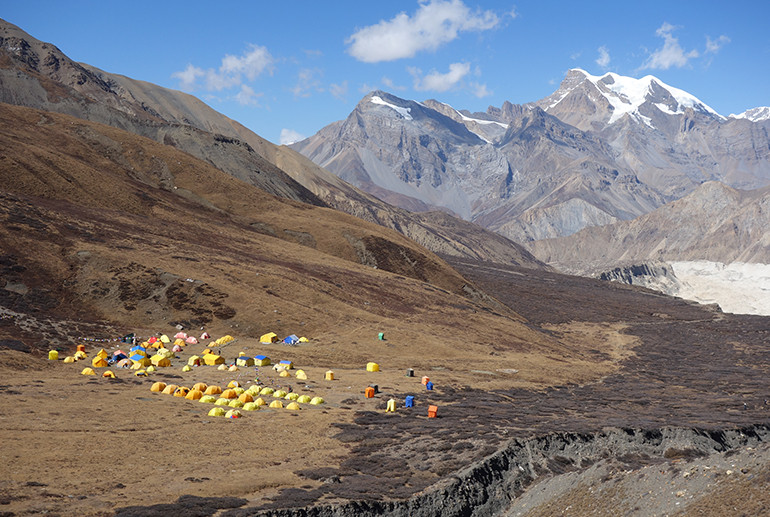

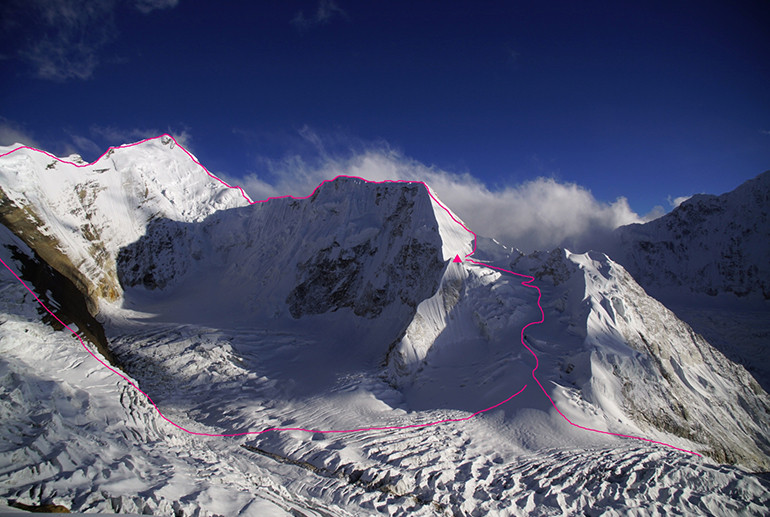

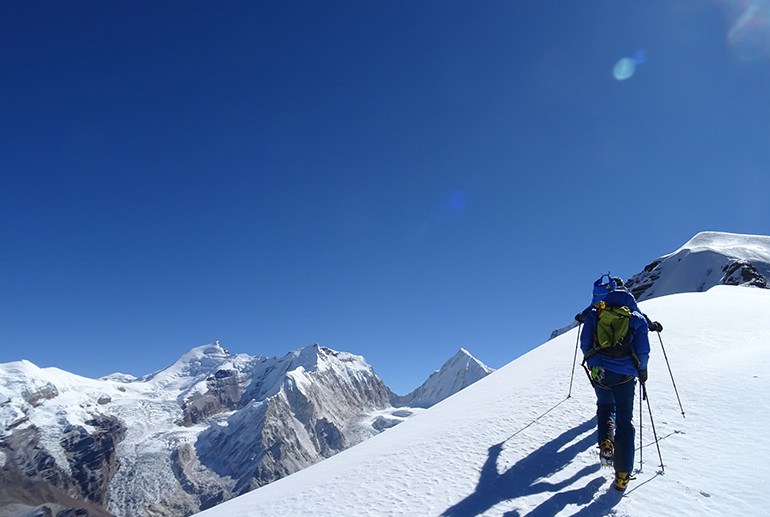

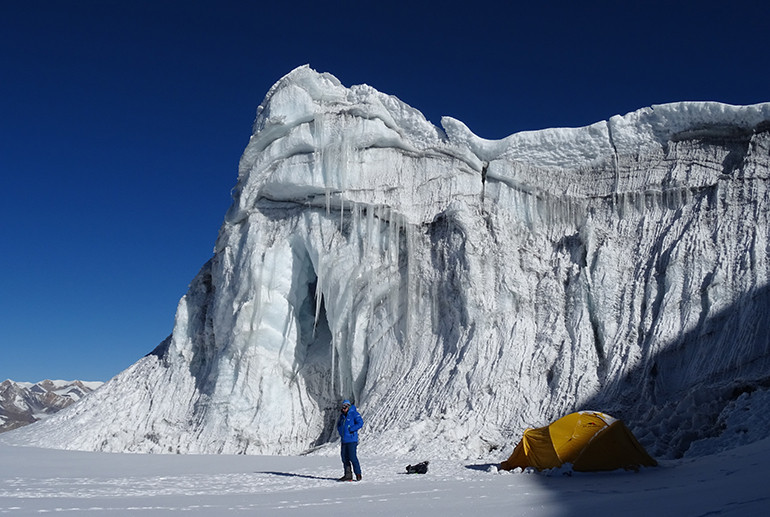

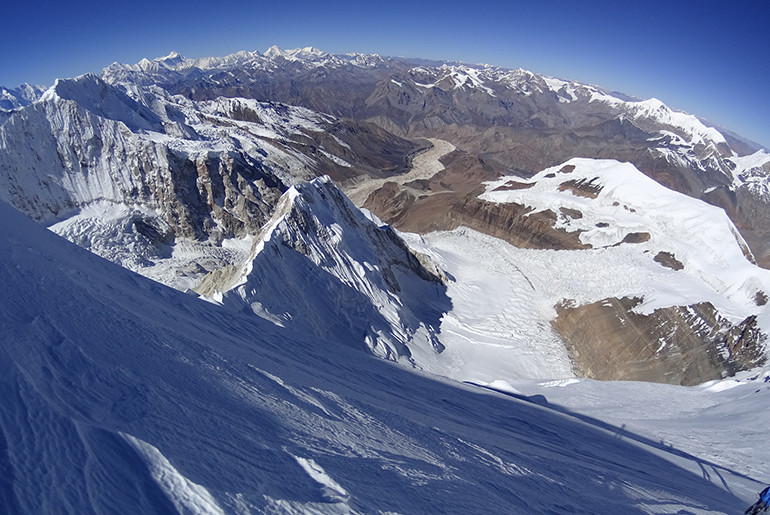

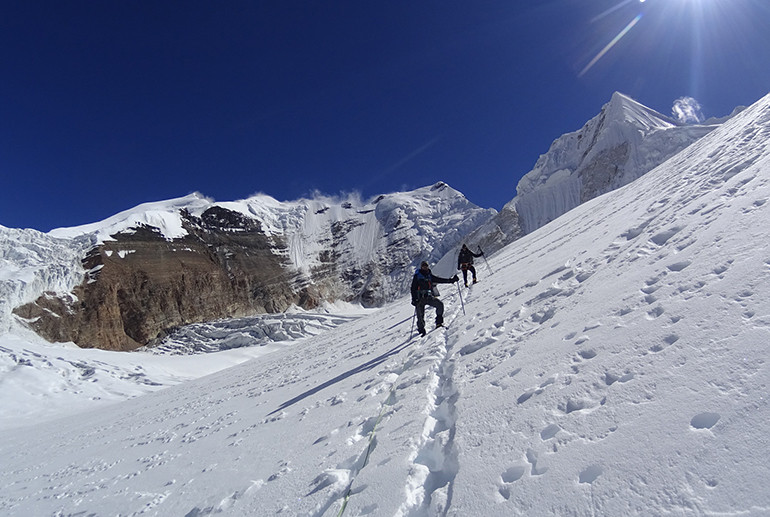

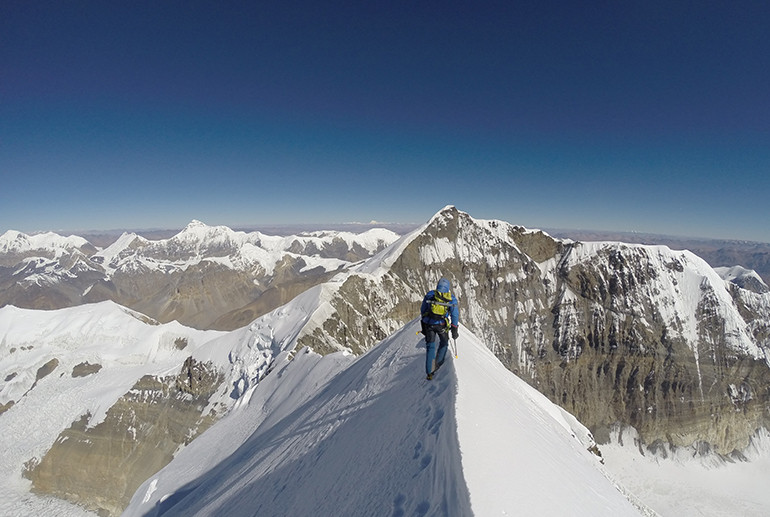

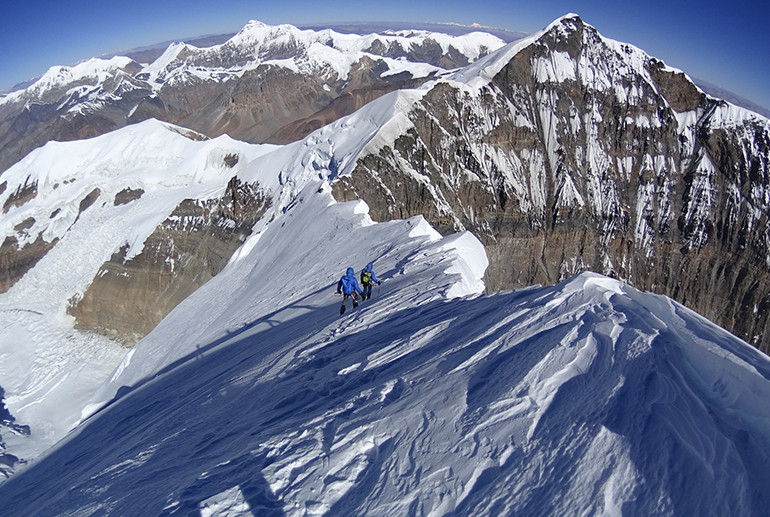




 Free shipping on orders over $200 - No minimum for registered users
Free shipping on orders over $200 - No minimum for registered users